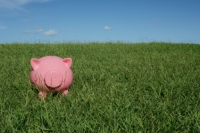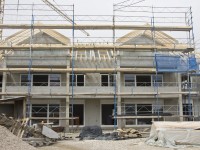What land value should I put into my development feasibility?
When carrying out your feasibility for a development site you have owned for a while, it can often be hard to know what land value to insert into the numbers. Do you put the purchase price? No question if you only just purchased the site, but what if you bought it 2 years ago in a rising market? What if you have owned it since the dawn of time? If this is the case then do you enter the purchase price or the current value of the land? There are strong arguments for either side here that need to be explored.

Let’s imagine a site you have just purchased and your numbers show that upon development you can only achieve a 15% return on development costs. This may be sufficient to justify development, especially if you are the builder as well as the developer, or you are highly experienced, or you are developing in a hot market, but for most of us this return isn’t high enough. We want 20%. So we shelve the development for another date. It’s a good thing we bought well, in a good location and have an acceptable rent coming in!
So now here we are two years down the track and our numbers work! Yay! They more than work, they show 40% return, but there is one problem... you entered the purchase price into the feasibility and not the current value of the property. Oh dear, the returns aren’t quite what they seem. Further, once we enter the current market value we discover, much to our horror, a return of... yep, you guessed it, 15%. What now!
At this rate you will never get the numbers to stack.
But here are some considerations you need to take into account. Remember back at the start we said that we wanted 20%? However, some would make it work at 15%, mainly builders, those who are developing in a strong and rising market and those who are highly experienced. These three people have the same thing in common – less risk. A developer who is also a builder has less risk because they can control costs more easily, and they can make a margin on the construction price as well. You obviously have less risk in a rising market as capital growth takes up any shortfall in return and an experienced developer can operate with a lower contingency as they know what it is they are doing. Less risk equals a need for less return.
So in saying this, if you have owned a property for 2 years and have already experienced good capital growth, isn’t the risk reduced for you? Put another way, if your numbers previously showed $150k profit and they still show about $150k but you have had $100k in capital growth, isn’t there less risk? Let’s say you monumentally stuff up and you make no profit. Yes a lot of time and energy wasted, but you still had the capital growth so you haven’t actually lost. Not a good way to operate, but far better than developing a site immediately after purchase with no built in capital growth.

Another consideration is that you should always be aiming to buy under market value. If you buy for say $50k under market value, make sure you put your current market value in at $50k under market value when you do your feasibility two years later – if you don’t you are just punishing yourself for buying well. It makes sense, if you buy well and go to develop immediately, you never immediately place that extra $50k into the numbers, yet we all seem to do it when we look at our numbers at a later time.
Also, when inserting your numbers two years later and you choose to insert a true current market value, make sure your buy costs aren’t related to this price – your buy costs are done and dusted two years earlier.
There is no right or wrong answer here, but perhaps a better way of looking at your feasibility is to stop looking at your percentages and start looking at your profit in dollar amounts. If you insert current market figures and it shows $150k profit, and yet if you sold the property you could make $150k, then there is no point developing! But if you could sell without developing for $150k or you could develop and make $250k (including the $150k in capital gains), then it might be worth your while developing... even if the numbers show only 10 or 15% return after you insert the current market value rather than the original purchase price. An extra $100k is an extra $100k after all!
Get educated!
Developing for Profit is a highly educational workshop aimed at educating existing and would be developers on how to maximise your profits and avoid the pitfalls. This exciting and information packed workshop is being held over two days in October 2009 and is a must for anybody involved or wanting to be involved in development. For more information on this workshop click here.


